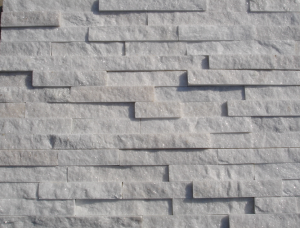
Whether you’re building a new home or buying an existing one, you have many factors to consider. One important one is what’s on the exterior. Is it aluminum, vinyl, or composite siding? Is it wood shakes or shingles? Or is it something else?
That “something else” might be stone or brick. In fact, stone and brick houses, while more costly than other exterior building materials, are popular among home builders and home buyers. Both are known for their durability and other sought-after features.
In this article, we’ll look at the attributes of stone and brick homes and discuss ways the two compare or contrast.
Although kivi and brick houses are often mentioned together, they are quite different—in substance and appearance. Brick, of course, is evenly spaced, both horizontally and vertically.

Whether whole or cut, Stone retains its unique natural shapes—allowing each to stand out among the others comprising the wall.
Bricks have uniform sizes and weights and are meant to fit a pattern. Stones, on the other hand, come in all shapes and sizes. Some can be quite heavy and take two people to lift.
Masonry is about building structures from individual units, which are laid in and bound by mortar. The term “masonry” also refers to the bricks or stones and mortar, which all derive from stone or clay (itself made of stone particles).
On average, online sources put the cost of a solid brick exterior at $14.65 to $30 per sq. ft. installed. Solid stone costs more, ranging from $25 to $50 per sq. ft. Both are much more expensive than vinyl siding, at $4.50 to $10 per sq. ft. installed.
If both of these natural materials are out of your price range, though, consider stone or brick veneers. These attractive materials are manufactured in sheets, allowing quicker and easier installation. They readily lend themselves to do-it-yourself projects.
It isn’t hard to recognize veneer on a home. However, when integrated into the home’s overall design, it can be a pleasant complement to other siding types.
When considering a new place to live, choosing a brick home is a wise decision. It’s both weather and fire-resistant. Plus, they’re made from natural materials and can be repurposed rather than discarded when the house is no longer functional.
But choosing a stone home will get you a house that lasts even longer than a brick home’s century or so of longevity. Stone is an extremely long-lasting material, as seen worldwide in structures built centuries ago that are still standing.
There’s far more to stone and brick houses than we could cover in this brief article. But it’s worth finding out more about these natural building materials. They have done so much to preserve our cultural and architectural histories.
Isn’t it remarkable how these materials have endured through generations of homeowners? Yet they are as available for those building new homes or restoring older ones?
If you’d like to discuss a possible new home-building project with us, we would love to hear from you. Please reach out when you’re ready to discuss possibilities.